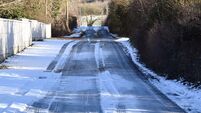Demolition of landmark Sextant bar in Cork prompts heritage debate

The Sextant opened in 1877 before being taken over by the Markham family in the early 1900s, and then run as a pub. Picture: Larry Cummins
The demolition of a landmark Cork city pub to make way for what will be one of the country’s tallest residential buildings has prompted calls for a new debate about protecting the city’s heritage.
Historian and city councillor, Kieran McCarthy, who watched today as demolition crews went to work on the former Sextant pub, which opened on Albert Quay on the city’s south docks in 1877, said people accept that the city needs to evolve.












